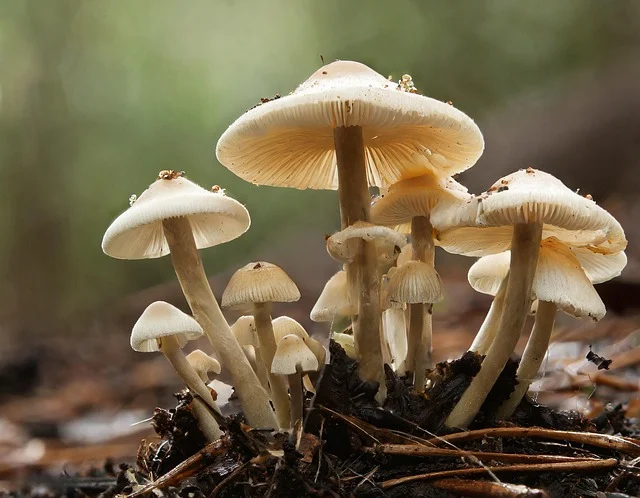Mushrooms are often celebrated for their culinary versatility and unique flavors, but hidden within their diversity lies a dangerous reality: some species are highly toxic and can be fatal if consumed. The resemblance of poisonous mushrooms to edible varieties makes foraging a risky endeavor, especially for those unfamiliar with proper identification. The toxins in these fungi can cause symptoms ranging from mild gastrointestinal distress to severe organ failure, often proving fatal without prompt medical treatment. This article explores some of the deadliest mushrooms in the world, their effects, and how to distinguish them from their edible counterparts.

World’s Deadliest Mushrooms
1. Death Cap (Amanita phalloides)
The Death Cap is among the most toxic mushrooms globally, found primarily in Europe. It closely resembles edible mushrooms like straw and Caesar’s mushrooms, making accidental poisoning common. Even cooking cannot neutralize the heat-stable amatoxins in this mushroom. Symptoms like abdominal pain, vomiting, and diarrhea manifest 6-12 hours after ingestion and can escalate to liver and kidney failure, coma, and death. This mushroom has been implicated in numerous fatalities, including historical figures like Pope Clement VII and possibly Emperor Claudius.
2. Conocybe filaris
Native to the Pacific Northwest, Conocybe filaris is another highly toxic mushroom that looks deceptively similar to edible species. It contains potent amatoxins, and symptoms of poisoning typically appear 6-24 hours after ingestion. While initial symptoms mimic food poisoning, the condition often worsens, leading to severe liver and kidney damage. Without treatment, poisoning can result in death. Its resemblance to harmless mushrooms makes it particularly hazardous for foragers.
3. Webcaps (Cortinarius Species)
Webcaps, found in northern Europe, include toxic species like Cortinarius rubellus and Cortinarius orellanus. These mushrooms contain orellanin, a toxin with a delayed onset of symptoms (2-3 weeks). Early signs, such as flu-like symptoms, are often misdiagnosed, allowing poisoning to progress to irreversible kidney failure. The stealthy nature of Webcap poisoning makes it one of the most dangerous types. One notable case involved an author and their family requiring kidney transplants after consuming Webcaps.
4. Autumn Skullcap (Galerina marginata)
Found across the Northern Hemisphere and parts of Australia, the Autumn Skullcap is highly poisonous due to its amatoxin content. Symptoms include nausea, vomiting, diarrhea, and hypothermia, progressing to fatal liver damage if untreated. This mushroom is often mistaken for hallucinogenic Psilocybe species, leading to accidental ingestion. Proper identification is crucial to avoid poisoning.
5. Destroying Angels (Amanita Species)
Destroying Angels are a group of deadly white mushrooms within the Amanita genus, often mistaken for edible mushrooms like button or meadow mushrooms. These mushrooms cause symptoms 5-24 hours post-ingestion, including vomiting, delirium, seizures, diarrhea, and organ failure. The most toxic species, Amanita bisporigera, is found in North America. Due to the delayed onset of symptoms, diagnosing and treating poisoning is challenging, making these mushrooms especially lethal.
6. Podostroma cornu-damae
Native to Asia, particularly Japan and Korea, Podostroma cornu-damae is a rare but deadly mushroom with red fruiting bodies containing trichothecene mycotoxins. Symptoms include abdominal pain, skin peeling, hair loss, hypotension, and liver damage. Untreated cases often lead to acute renal failure, multiple organ failure, and death. Though rare, this mushroom has caused several fatalities in Asia, emphasizing the need for careful foraging.
7. Deadly Dapperling (Lepiota brunneoincarnata)
The Deadly Dapperling, found in Europe and parts of Asia, contains amatoxins similar to those in the Death Cap. Misidentified as edible, this mushroom causes severe liver damage. Symptoms like nausea, vomiting, and abdominal pain can progress to liver failure if untreated. While rare, poisoning from this mushroom underscores the importance of accurate identification when foraging.
Conclusion
Foraging for wild mushrooms can be an exciting experience, but it comes with significant risks. The deadly mushrooms listed above highlight the importance of proper identification and caution when consuming wild fungi. When in doubt, consult an expert or avoid foraging altogether to prevent accidental poisoning.
